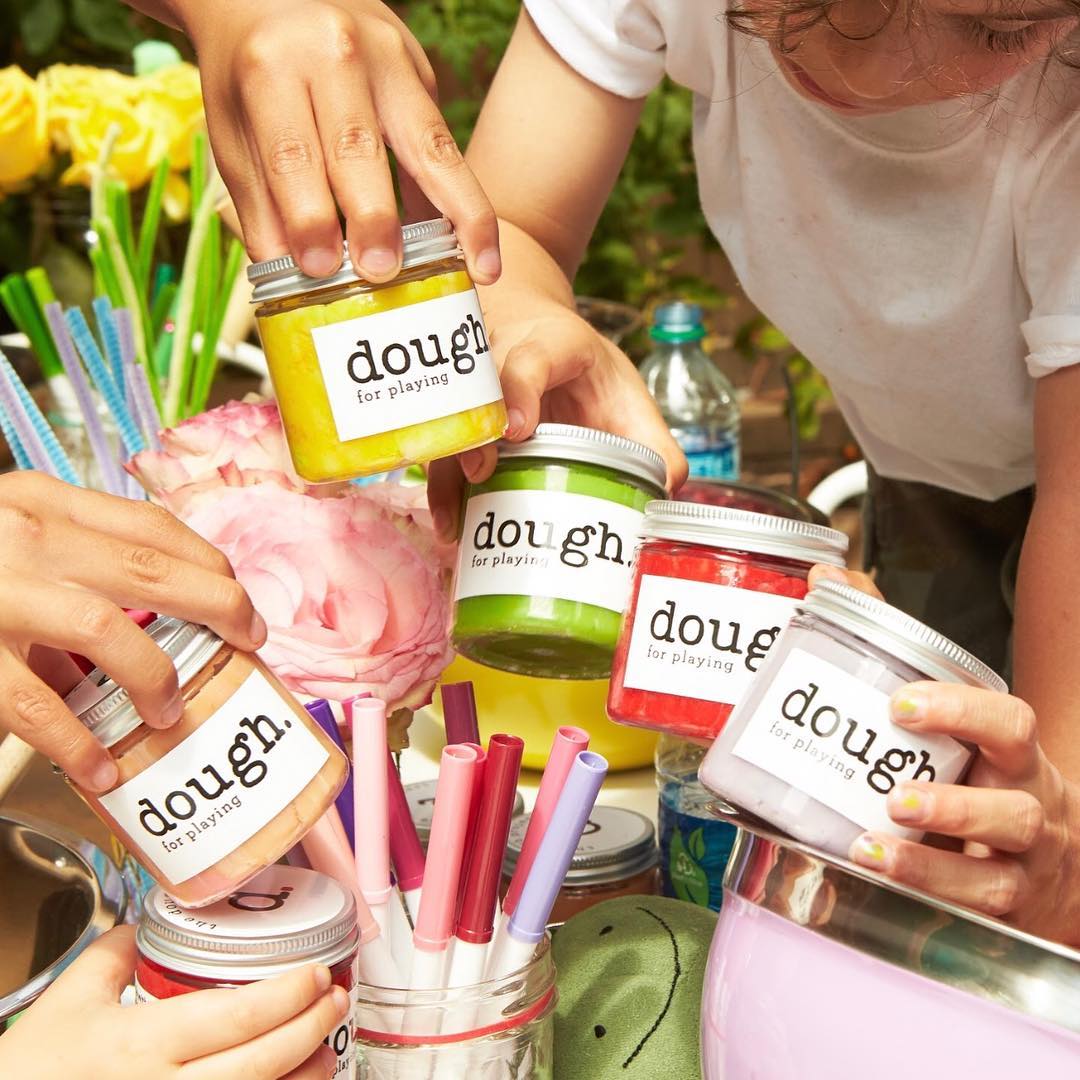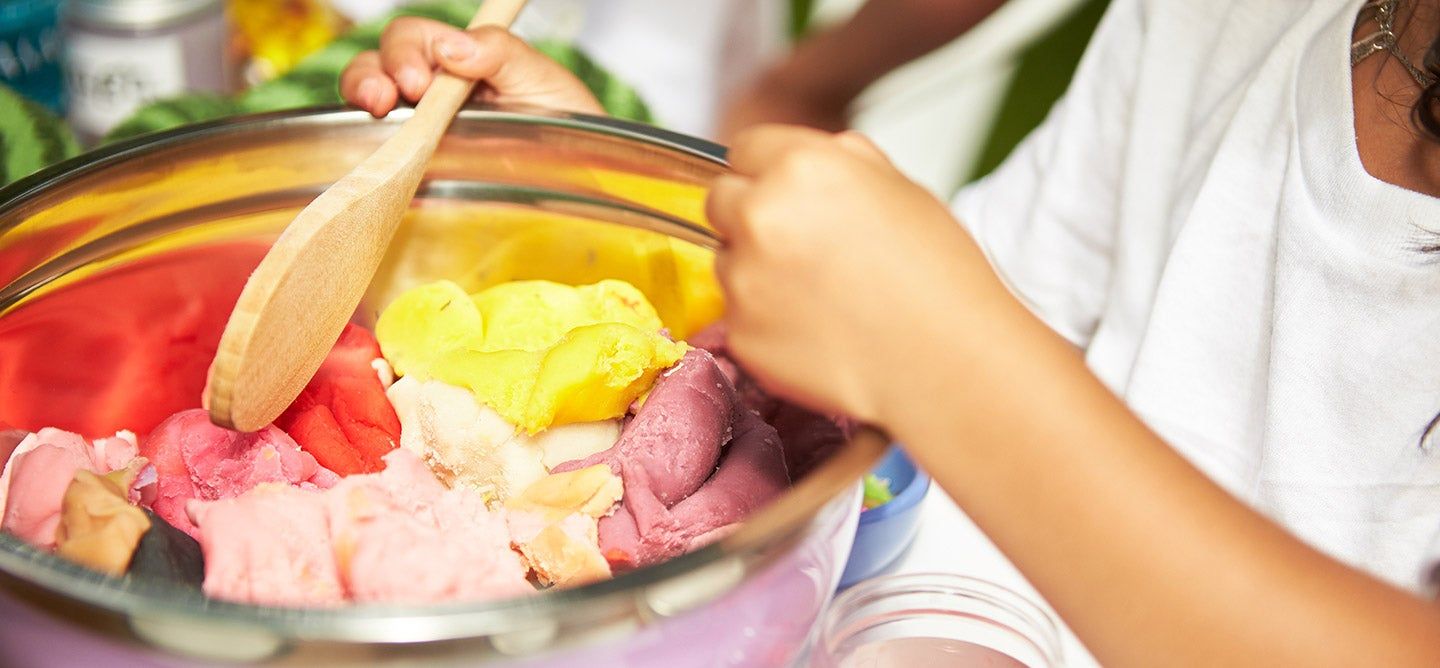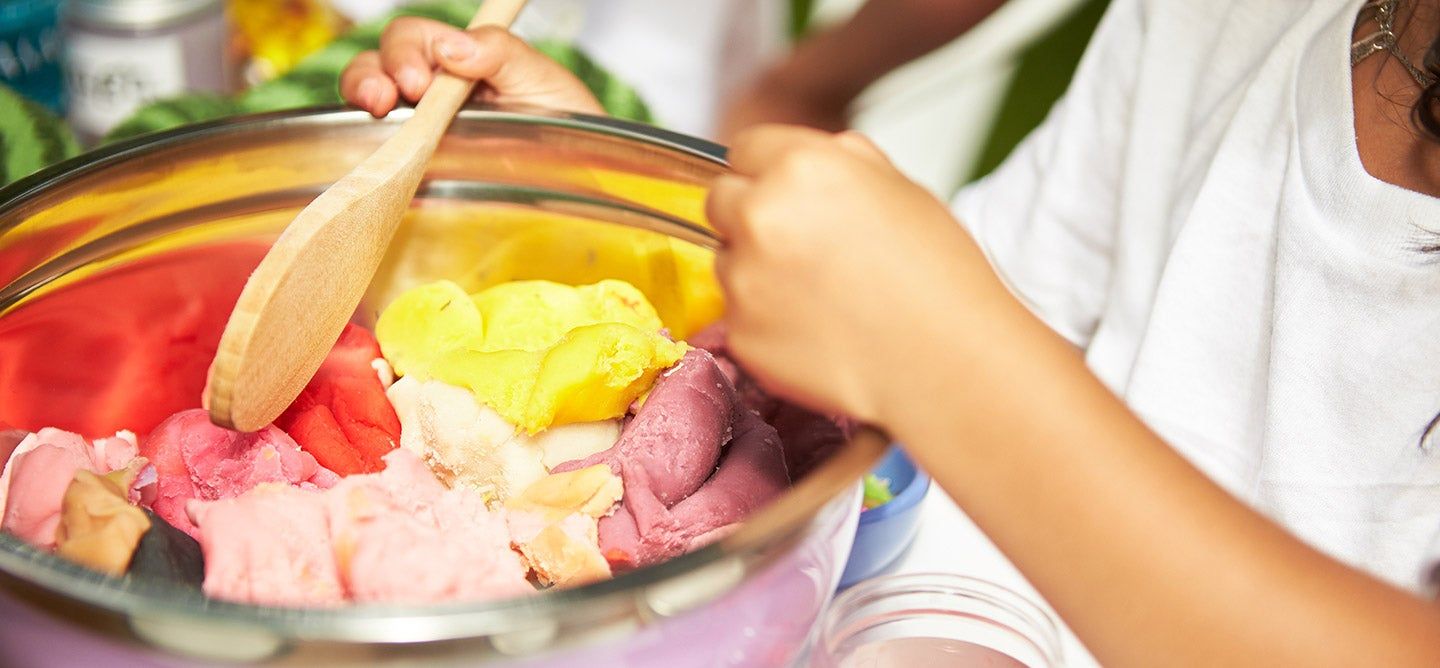
Behind the Brand
The Dough Project
Whether you want to DIY your playdough at home or simply let your kids build and explore with an all-natural version, The Dough Project can bring creative play into your home. In celebration of the company’s launch on Maisonette, we chatted with founder Chelsea Milkman about the inspiration behind the brand and the magic of homemade playdough.
- Interview By
- Marnie Schwartz
Your experience as a preschool teacher in New York City inspired The Dough Project. Tell us a little bit about that inspiration, and what made fresh playdough so magical in your classroom?
We made playdough in my classroom every single week of all of the 10 years I was teaching. It never got old. It was always fun and consistently engaging. And something about it brought our group together in this really special way. No matter what their age was, the kids looked forward to it. I loved that the kids made it together, and we would talk about that as we played with it all week. Making it themselves and voting on what colors to make each week was a big part of their experience. I wanted to package up that classroom magic and homemade play dough was the way to do it. It was something I was always suggesting to people, and parents would ask me about it all the time. I wanted to figure out a way to get that experience into the homes of families. That was the inspiration behind the DIY kit, which came before the dough jars. And of course, I also wanted parents to be able to have quality jars, because not everyone has the time to make it themselves, although the “dough it yourself” kit makes it very easy.
Playdough has benefits for kids beyond just being fun. What are some of the ways it supports kids’ development?
The physical benefits as a fine motor strengthening activity are super important. But more than that, I noticed that more skills were developed at my playdough table than anywhere else in my classroom. Things like language acquisition, conflict resolution, problem solving, sharing with each other. Children start to understand early math concepts like shapes and spatial relationships, they learn about color mixing, about balance. But most important for me was the social piece. They needed to navigate playing with it together. At home, it can help connect siblings of different ages, or kids with their grandparents. It’s a great intergenerational activity and can be so nostalgic for grownups.
The Dough Project’s dough is made from totally natural, food-grade ingredients. Why is that ingredient quality so important to you?
I believe very strongly that when parents worry less, their kids play that much better. You don’t have to interrupt them every few seconds, saying “don’t put that in your mouth!” You can let them play uninhibited and uninterrupted. When they feel safe, they can be more creative and take more risks, because you feel safe letting them do that. For slightly older kids, it’s important for them to know where stuff comes from. They notice that beets are red, and learn that's where the color came from.


These too were very inspired by my classroom. We had our playdough in a special jar, on a low shelf, always accessible to the children. It was clear so they could see the material, and it was labeled very clearly. We felt strongly that our dough be packaged in a "real jar" as opposed to a toy, to bring even more value and specialness to the play experience. The heavy-duty, BPA-free plastic feels like a glass jar, but you don’t have to worry about it breaking.
And it’s all made in New York City, right? Why did you decide to keep everything local?
As a New York City educator, I felt strongly about working with families here first. Our brand is all about creating experiences and celebrating the process, so it has always felt important to me to keep our process close to home. Putting it in a factory far away… it would have felt like I was not practicing what I was preaching.
Your sensory kitchen classes for babies sound like so much fun! Since they’re currently on pause due to Covid-19, how can parents bring some of the magic into their own homes with your doughs?
I encourage parents to do the activities that we do in the class at home. Use kitchen tools like bowls, spoons, and colanders… For the sensory activity, we used coconut flour because it’s safe to eat raw if babies put it in their mouths, so you can worry less. When you add water, it changes texture and gets really fluffy, and it’s sweet. It’s all about multisensory experiences that can be as messy or as non-messy as you want. You don’t have to always put out the flour, you could do just kitchen tools like a pot and a wooden spoon, or just water. Or bring the whole setup into the bathtub so you can wash them up right after!